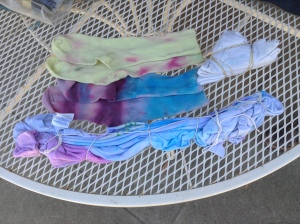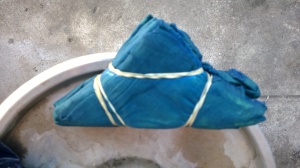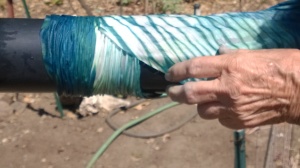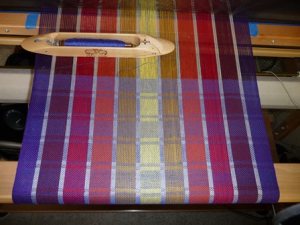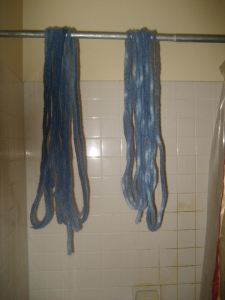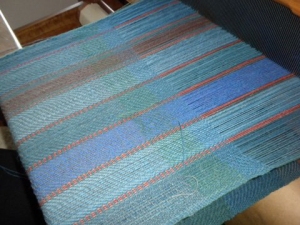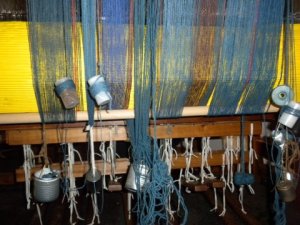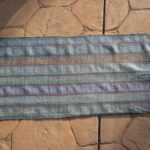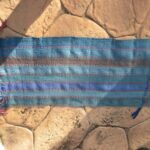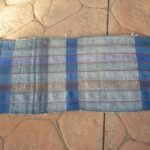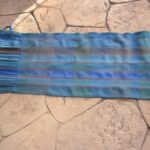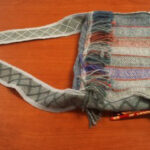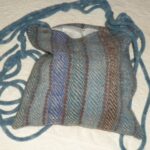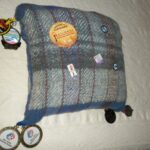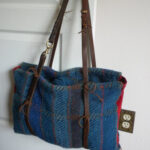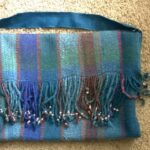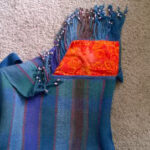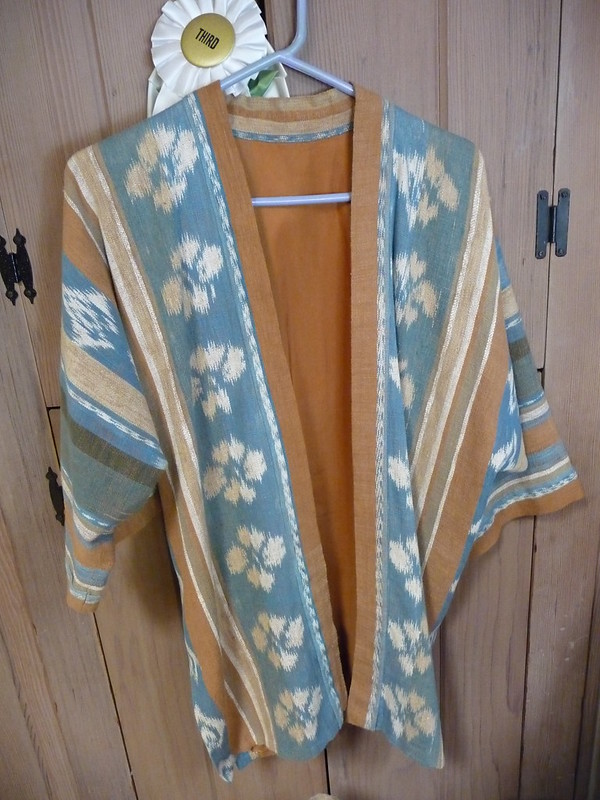We had a wonderful indigo dye day today. Frank Mikulastic and Sandra Kupper had items to dye. We have been experimenting with shibori folding techniques and tried some new ideas today.
 Frank started with white cotton fabric. He folded the fabric in the long direction and then folded it into a triangle bundle. He then wrapped rubber bands around the outside to hold it together in the dye bath.
Frank started with white cotton fabric. He folded the fabric in the long direction and then folded it into a triangle bundle. He then wrapped rubber bands around the outside to hold it together in the dye bath.
He dipped it into the dye bath 5-6 times and the fabric got darker with each dip into the indigo. (With indigo, the best way to get a darkly dyed fabric is to do multiple dips, not with stronger dye.)
 Sandy wrapped her fabric around a pvc pipe and tied it with string then dip dyed it about 3 times for a fantastic looking diagonal stripe.
Sandy wrapped her fabric around a pvc pipe and tied it with string then dip dyed it about 3 times for a fantastic looking diagonal stripe.
She also dyed socks and a t-shirt – both had been unsuccessfully dyed once before with procion type dyes. Both items dyed beautifully this time.